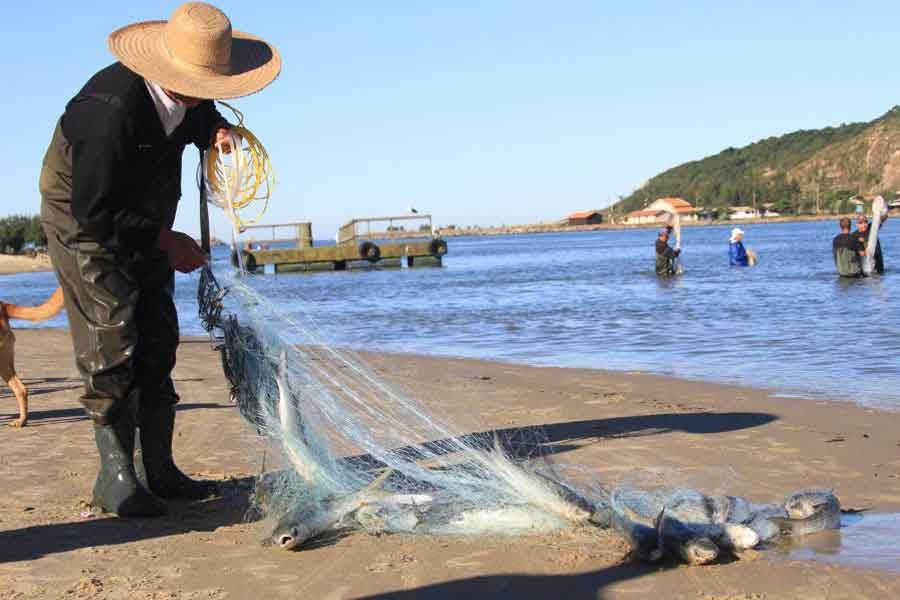
On the eve of June, the beach remains dark, silent, untouched. In the shadows, a young fisherman stands guard. It’s likely that his grandfather once scanned the sea from the same spot, several decades before. He waits, and with him, the whole town waits. He understands his ancestral responsibility; he knows the importance of his vigil. He waits for the tainha, praying for its return.
In the morning, another young person stands on a rock by the beach, observing the sea. The signal is unmistakable; the surface comes alive. He confirms it and lets out a loud, clear whistle. A couple of wooden boats quickly close off the mouth of the large bay. They cast a net that spans hundreds of meters. In Bombas, near Porto Belo, shopkeepers close their businesses, and hotel employees kick off their shoes. The beach begins to fill with people. Everyone takes hold of the ends of the net and starts pulling it out of the sea with great effort.
It is an ancestral fishing tradition, a timeless ritual that repeats itself every year—it is the festival of the tainha. With each tug of the net, hundreds of fish leap into the air, majestic and powerful, resisting being caught. A Spanish-speaking tourist immediately recognizes the fish; it is what we call «mullet» or «grey mullet.» Everyone participates, men, women, even children pull on the net, which becomes heavier as it nears the shore. At times, it threatens to break, the weight becomes unbearable, and someone starts shouting. A group of tourists, caught up in the scene, joins in the effort. Everyone pulls, simultaneously, pouring their soul into the net.
Shortly afterward, thousands of fish thrash about on the beach; it’s time to distribute them. Each person gets their share, and every effort will be rewarded. In the past, the fish were taken to homes and salted to ensure the necessary protein for the whole year. Just ten days ago, they caught 19,000 fish with the net, now filling domestic freezers for the same purpose. Every year, since humans populated those coasts, they have depended on mullets for their survival. The mullets enter the bay in a reproductive frenzy and fertilize their eggs there. People will try to catch them in a fine net that allows the fertilized eggs to escape, ensuring their return to the same bay the following year and ensuring the survival of both species.
This is artisanal fishing, pure fishing without machines or motors—it is one animal subsisting on another animal. It’s the kind of fishing that never exterminated the fish. It’s a community seeking sustenance. A community that, in the past, would not have survived without the tainha and has instilled respect for this fantastic creature in its children. They could have mechanized and commercialized this fishing method many years ago, but they chose to keep it as it is.
I have seen men pulling the net; I marveled at the sight of an entire community united for the common benefit. I have seen those who didn’t need fish pulling the net to help feed their neighbor’s children. I witnessed them sharing the fish with the respect and admiration that only those who cherish life, who truly love the sea, can show. I have seen them on the beach at sunset, thanking the sea for the tainha.
«You cannot defend what you do not love, and you cannot love what you do not know.»

